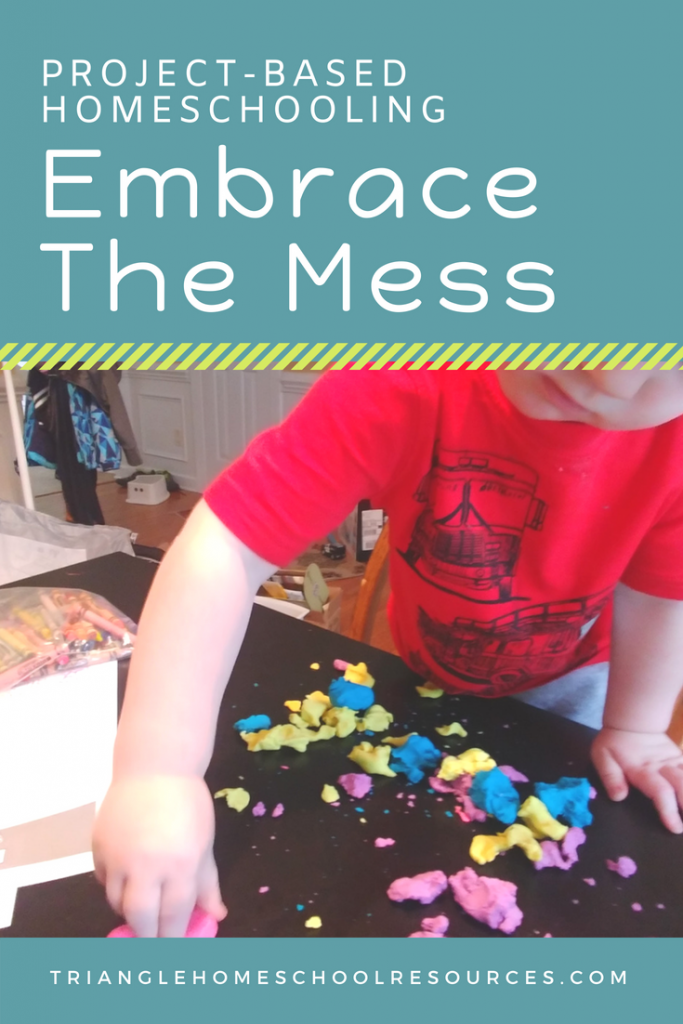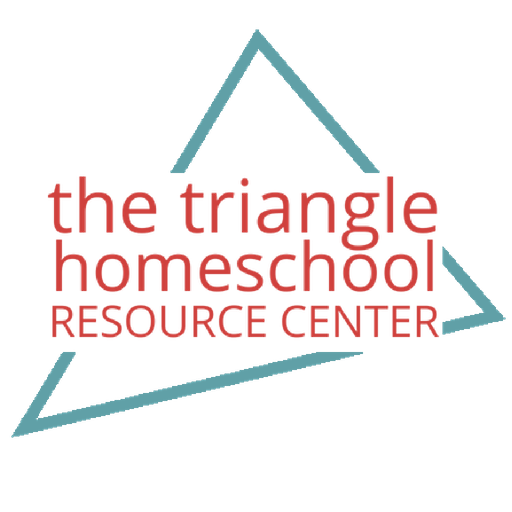Sometimes homeschooling can be a mess: the paints, the papers, the half-built Egyptian pyramids. Projects are part and parcel with the homeschooling experience. They can be a little or a lot of your year, but you don’t want to miss out on the opportunities for learning that project-based homeschooling provides, especially for your creative kids!

Where our project-based homeschooling started
I tell this story a lot. You’re going to see it in a bunch of blog posts and videos. But it’s the story of how I came to see that homeschooling was going to work for my family.
When my oldest son was 4, he was obsessed with dinosaurs. He lived, breathed and ate dinosaurs. Yes, ate. You know they make dino-shaped chicken nuggets, right?
The budding paleontologist came home from preschool disappointed that they didn’t talk about dinosaurs every day. It only seemed to come up when they were on the letter ‘D’, and that was an offense my little guy could not abide. (That little guy, by the way, is now approaching 15 and registered for driver’s ed. Oh, mercy.)
What’s a mom to do? Well, she uses the library. And Netflix. And butcher paper and printer and crayons and scissors.
We made a huge project out of researching dinosaurs, keeping a binder and making wall posters. Without even knowing it, I had started project-based homeschooling: we counted dinosaurs; we recorded dates and weights; we measured our house in comparison to dinosaurs; we made up stories about dinosaurs; we learned phonics and Latin roots because, darn, those dinosaur names are hard!
Use it a lot, or a little
Now, to be honest, I’m not exactly sure how to classify that big dinosaur project that turned us on to homeschooling. It seems to fit a lot of definitions.
- Project-based homeschooling
- Eclectic homeschooling
- Interest-led homeschooling
- Unschooling
- Parenting (because he was only 4, y’all, and what parent doesn’t help their kids follow their passion when they’re 4?!)
Whatever you call it, we’ve used this method time and again, in fits and starts. But the concept of project-based homeschooling has come in most handy with my creative middle child. She is full of big ideas, and she loves to see those ideas come to life in any medium she can get her hands on.
She taught herself to crochet when she was 8. How do I turn that into homeschooling? Well, first of all, I try to avoid calling it that because it may kill whatever passion she has. But there are aspects of it I encourage — like journaling the projects, figuring out the math in a pattern, or budgeting for yarn and books.
Most recently, we were bitten by the slime bug. The kids noticed some recipes worked better than others, and they wondered why some ingredients seemed essential while others were interchangeable. You see where I’m going with this one, right? Of course I googled the science of slime and we had some great research sessions involving chemistry and compounds and solutions. We went from slime to oobleck and then on to bath bombs. Science naturally lends itself to projects.
So does writing.
- Write a business proposal or an ad to sell those crocheted dolls.
- Let’s make an acrostic poem with your best friend’s name and put it on a t-shirt for her birthday.
- Write a review of that book we just finished and I’ll share it on Amazon.
These things all sound like single assignments, but they are multi-faceted and often lead off on rabbit trails where we learn so much more than just completing an assignment to hand in by a deadline.
Projects are cross-curricular
What about math? How can you do make math project-based?
I’m still working on that one. But I’ve found lots of ways to integrate math into our projects and it’s not only teaching concepts, but it’s also teaching life skills.
My favorite cross-curriculum project lately was “The Road Trip We Didn’t Get To Take Because of Baby.”
No, really. That’s the title of the folder.
When I was pregnant with our third, and slightly insane because of it, I had the brilliant idea that we’d plan a big road trip to go halfway across the country to visit my very dear friend. Turns out baby hated the car, so the idea had to be scrapped until some date in the future we have yet to determine.
But the planning was brilliant. I left it all up to the kids. We got out maps and looked at what states we’d pass through, and they got on Google and started looking up visitor’s centers and filling out forms for information. We looked up cities in the Farmer’s Almanac to get an idea of the weather. We estimated distance and days traveling, looked up hotel rates, and figured out how much we’d spend on gas. We made a list of foods we could make on the go and keep in coolers.
It was epic. And even if we never get to take that trip, the memories we made planning and dreaming were worth it!
(Maybe an epic trip isn’t in the cards for you right now either. How about some good ol’ field trips?)
Ok, no. I still want to go to Texas.
Get more information
So that is how I have used project-based homeschooling. I use it as some of our homeschooling. Just a piece. But if the possibilities of this method make your heart flutter with excitement, you can make it all of your homeschooling!
For that, you should consult the expert. I highly recommend Project-Based Homeschooling: Mentoring Self-Directed Learners by Lori Pickert. There is an associated website and a Facebook group. I follow both and continue to be inspired to dive deep wherever my kids’ creative bents take us!
So tell me in the comments: Have you used project-based homeschooling? If you haven’t tried it yet, can you see it working for your family?

